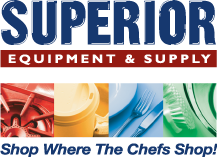
The goal for most restaurant owners is to cut down on costs while providing a quality dining experience for customers. One of the biggest expenses that a restaurant has is the cost of food. It can be quite a challenge to use quality ingredients while still reducing your overhead in preparing meals for your patrons. However, there are a few ways to accomplish this goal.
TRACK FOOD USAGE: One of the first steps in reducing food cost is to figure out how much food you’re using. Monitor your inventory on a regular basis, preferably daily or at least weekly. Notice how much of your ingredients go bad and must be tossed. Make note if you’re running out of items, because you may not be purchasing enough. When you can buy in larger quantities, you can often get a discount.
SHOP AROUND: Some restaurant owners and chefs find a supplier and stick with them no matter what. Instead, to make the most of your budget, you should shop around to find the lowest cost suppliers. You may discover some suppliers are cheaper on certain ingredients while others offer better pricing on others.
If you really like your supplier because they have been with you a long time or provide exceptional customer service, let them know what prices you found with other suppliers. They may be willing to offer a discount to keep your restaurant as a customer.
CONSIDER BUYING IN BULK: Many restaurant owners try to buy in bulk non-perishable items. While that can provide a good savings, you may discover you can purchase perishable ingredients in bulk as well. Just ask the supplier if they will ship in multiple packages if you are willing to pay for the entire purchase now. It benefits them to work this way because they are guaranteed a sale and already have the money up front. At the same time, it allows you to only have as much food on hand as you can use before it goes bad. You may also be able to divide up the portions into storage containers and freeze some for later use.
CONSIDER OPTIONS FOR PREPARATION WITH FOOD: Instant, processed or individually wrapped items are often easier to use and take less prep time, but they are costlier. You need to compare the cost of doing the work in-house or buying items that are already ready to be used. Much of the time, you’ll find it’s less expensive to pay for the labor with your staff than to buy the items already pre-made.
CONSIDER BUYING IN A GROUP: If you run a small eatery, you may not be able to handle large quantities and take advantage of buying in bulk. It might make sense to join a group purchasing organization. These groups allow multiple restaurants to participate to create one order in bulk.
BUY LOCAL: You can often cut expenses in your kitchen while offering better quality of food if you buy from local providers. More restaurants are shopping at farmer’s markets or contracting with local farmers for fresh, low-cost ingredients.

